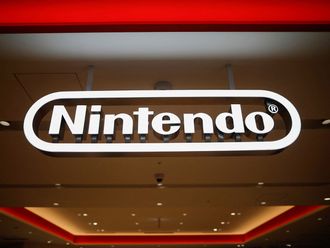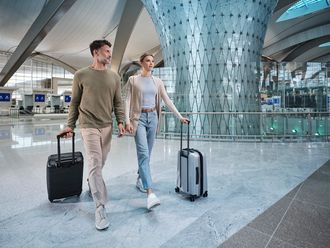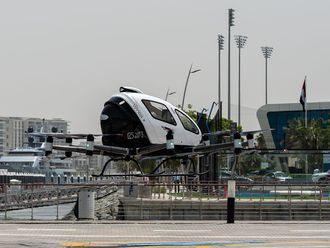
As we approach the year-end/new year shopping season, the region’s retail sector is hotting up. Dubai has launched Dubai CommerCity free zone to promote Dubai’s position as a leading platform for international e-commerce.
The region’s private investment is expected to be attracted to the sector and the GCC’s e-commerce market is forecast to reach Dh73.4 billion by 2020. And account for 10 per cent Dubai retail sales by end of 2017.
The retail experience no longer happens only in stores or online, it happens everywhere. Shoppers are faced with more buying choices than ever and demand a seamless experience across every interaction point with a brand. This includes everything from the accuracy of the retailer’s website to the level of service at their brick-and-mortar store to the delivery experience and satisfaction of the final product.
Brick-and-mortar stores are quickly expanding their e-commerce capabilities and online-only retailers are further innovating throughout their supply chains and venturing into brick-and-mortar footprints. Smaller, niche retailers are also expanding their ability to offer richer and more personalised experiences tailored to shoppers in their local market.
Retailers must rapidly innovate across the front of a store, at the back of a store, and distribution centres to remain competitive.
Heightened customer expectations continue to drive a retail transformation and fuel technology investment to alleviate some of the biggest pain points. Zebra’s 2017 Global Shopper Survey found that rising shopper expectations continue to outpace retailer in-store technology investments. While four in 10 surveyed shoppers cited being better connected to consumer information than store associates, a majority of millennial shoppers (53 per cent) perceive that they are more connected than store associates.
But, more than half of surveyed shoppers believe technology is improving the shopping experience with 57 per cent specifically citing store associates using tablets.
Heightened fulfilment requirements are transforming shopper expectations — 80 per cent of those surveyed purchase items in-store and either take them home or ship from store to home. Two-thirds (66 per cent) of shoppers want next-day or same-day delivery.
In the race to stay ahead, retailers are adopting tactics to increase sales and attract more shoppers in-store and online through integrated models, including click-and-collect. With its many delivery options, click-and-collect is becoming an increasingly expensive service for retailers to provide. The costs of picking and delivering individual items to independent locations is soaring far beyond a bulk delivery to a physical store.
However, if investment is injected in the right areas, click-and-collect can become very profitable for brick-and-mortar retailers. They have a lot to gain from anything that brings customers in-store, where the possibility of upselling and re-enforcing the brand engagement is strong.
It is possible to run efficient Click and Collect services as something other than a loss-leader or a “necessary evil”, and it’s not about trial and error, or cutting corners. The secret to making click-and-collect successful is to create a process chain based on three pillars: real-time inventory visibility, connected IT systems and an efficient receiving area — without any weak links.
To effectively and efficiently manage orders, store associates and systems must share accurate real-time inventory visibility. This means that systems must be able to correctly identify the location of each individual product across the business, whether that be in-store, in the warehouse or the distribution center.
Without this accurate and real-time visibility of stock in-store, retailers cannot rely on accurate identification and traceability of individual items. Therefore online orders collected in-store will need to be picked and fulfilled at the warehouse level.
Pickers will need to move orders that have been individually picked from the warehouse to the staging areas, where they will often need to be combined with other picked goods before they are ready for shipment. Items can remain in staging areas until the entire order is complete.
Therefore, the biggest hit for retailers is not the logistical issues of click-and-collect services. Instead the cost implications are the additional handling and fulfilment services, which ultimately decrease an organisation’s bottom-line.
As technology rapidly advances in the retail space, processes are becoming increasingly transparent and shoppers no longer tolerate poor or lagging shopper service models. Whatever channel a shopper inquiry comes from, retailers need a single, accurate version of the truth. IT systems need to be connected.
As all the different elements of the fulfilment network have different speeds and capabilities, it’s crucial to understand how orders flow through the process, and for systems to be properly connected. This absolutely must include a robust, reliable and watertight-secure wireless network.
To ensure a seamless delivery and receiving process, retailers need to ensure they have clear areas where goods can be received in-store. Guided receiving and put away solutions and processes allow store associates to access accurate, real-time information about what was received, when it was received, and its condition.
— The writer is Director of Retail and Hospitality EMEA, Zebra Technologies.












